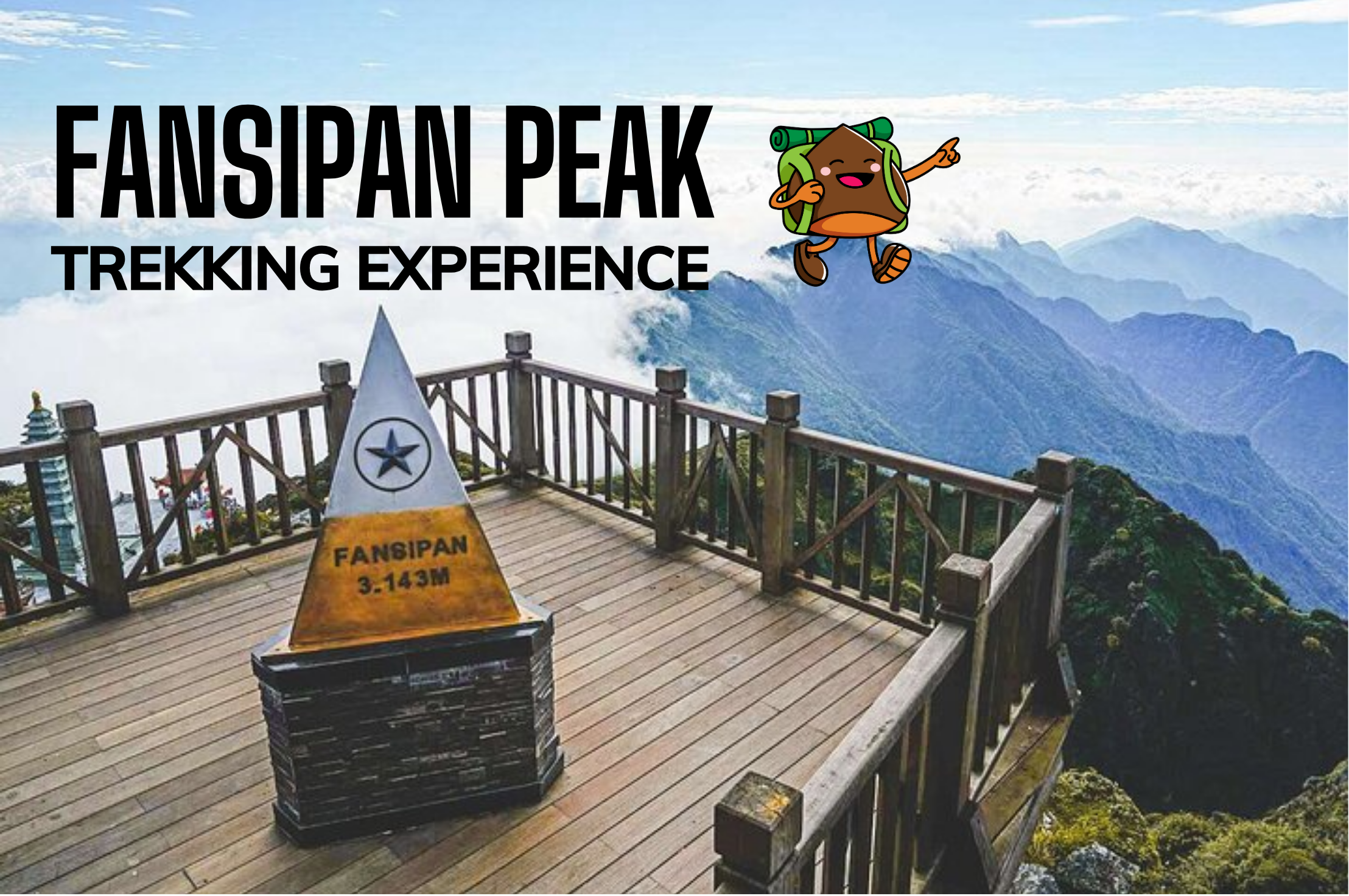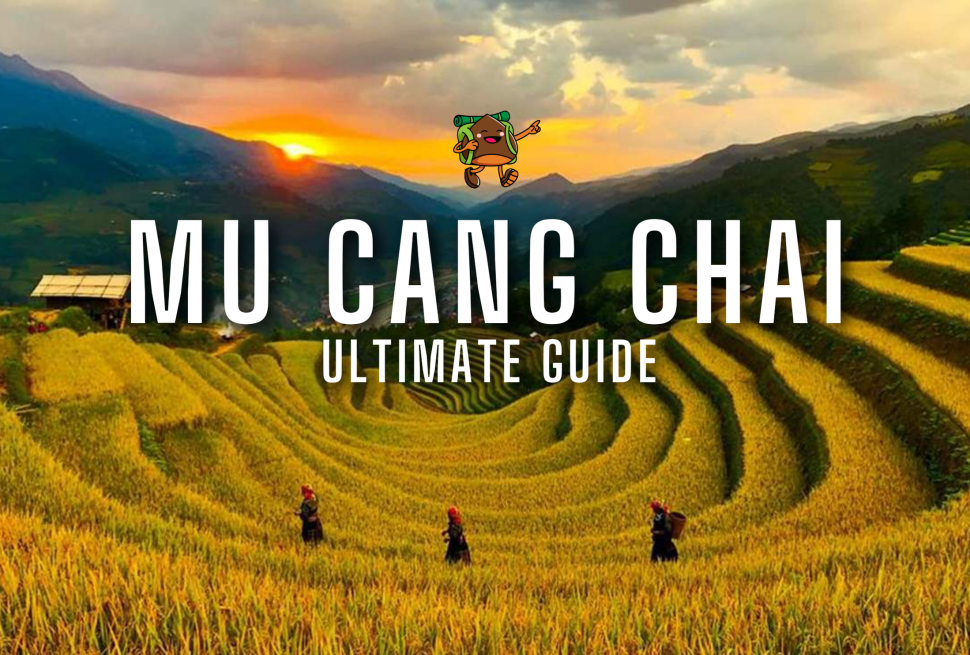When visiting Sapa, almost everyone dreams of conquering Fansipan — the Roof of Indochina. However, reaching the summit is no easy feat. With the experience of having conquered Fansipan three times, Chestnut Travel is here to share all the most detailed and comprehensive trekking tips for Fansipan, from A to Z. Our goal is to help you achieve your dream of touching the peak of Fansipan with ease.
Where is Fansipan?
Fansipan is the highest mountain in Vietnam. It is also the tallest peak in all of Indochina (Vietnam, Laos, and Cambodia), earning it the nickname “The Roof of Indochina.” The mountain stands at 3,143 meters (10,312 feet) above sea level. It is located in the heart of the Hoang Lien Son mountain range, bordering the provinces of Lai Chau and Lao Cai.

When Is the Best Time to Visit Fansipan?
Unlike many other tourist destinations where you have to visit during the “peak season” to enjoy its highlights, the Fansipan trekking tour offers something special year-round. No matter when you go, Fansipan treats visitors to its “four-season specialties.” Based on the A-to-Z trekking experiences of many adventurers, here’s what each season has to offer:
Spring (February – April): Trekking Fansipan in spring gives you the chance to admire blooming mountain flowers across the northern forests in the cool, crisp air. It’s a peaceful and refreshing time for nature lovers.
Summer (May – July): Fansipan transforms into a floral paradise in the summer, with vibrant displays of rhododendrons, ancient roses, climbing roses, sunflowers, agapanthus, and hydrangeas filling the landscape with color and fragrance.
Autumn (August – October): If you hike Fansipan in autumn, you’ll be rewarded with views of golden terraced rice fields that resemble stunning natural paintings — a true photographer’s dream.
Winter (November – January): This is the season when you might witness rare snowfall atop Fansipan — a magical, one-of-a-kind sight that adds to the mountain’s allure. Perhaps this unique winter charm is one reason Fansipan continues to captivate travelers from around the world.
Choosing Your Route to the Top of Fansipan
Depending on your schedule, physical fitness, and weather conditions, you can choose from several routes to reach the summit of Fansipan. Currently, there are three main trails leading to the peak, each offering a unique trekking experience:
1. Tram Ton Route (Also Known as the Easy Route)
This is the most popular route, especially recommended for first-time trekkers. The path mainly consists of accessible forest trails and typically takes 1 to 2 days to complete. However, based on Phượt Vi Vu’s A-to-Z Fansipan trekking experience, you’ll still need a good level of fitness to complete the climb comfortably.
2. Sin Chai – Tram Ton Route
This moderate trail takes about 2 to 3 days to finish. It’s ideal for those who want a shorter route without missing out on scenic beauty. The Sin Chai – Tram Ton route is known for its stunning natural landscapes, making it a favorite among adventurers and explorers seeking both challenging and breathtaking views.
3. Cat Cat Village Route
According to Phuot Vi Vu’s Fansipan trekking experience, this is the longest and most difficult route of the three. It features steep inclines, rapidly changing terrain, and various natural obstacles along the way. Because of its technical difficulty, this route is best suited for experienced trekkers who are well-prepared for intense mountain climbs.

Fansipan Trekking Tips from A to Z
To have the best experience on your Fansipan trekking tour, here are some essential tips to keep in mind:
Before the Trek
✔️ Train your body + prepare mentally
This is crucial for any trip—especially a mountain trek. Conquering a high summit like Fansipan requires endurance and physical strength. Ideally, you should dedicate 30–60 minutes daily to exercise such as running or stair climbing.
Mental preparation is equally important. Trekking can be exhausting and challenging, and there may be moments when you feel like giving up. According to seasoned trekkers, strong willpower and determination are key to reaching the top of Fansipan—alongside physical readiness. (You can also check out: 5 ways to train your body for a trekking trip)
✔️ Plan your itinerary + book a local porter
These are two of the most important steps before your trip. A clear itinerary helps you stay organized and confident. Hiring a local porter is highly recommended for your safety. They know the terrain well and can guide you through difficult spots while assisting in emergencies. Most local porters here are ethnic Hmong people who speak basic Vietnamese and are very experienced with the route.
What to Pack for Fansipan Trekking
Don’t miss our article on the 12 essential items for trekking. Due to Fansipan’s unique weather and terrain, being well-prepared will make your trek much more enjoyable and safe.
Here are the must-have items:
✔️ Backpack: Choose a medium-sized backpack that can hold 3–4.5 kg. Make sure it has chest and waist straps to keep it secure to your body and prevent it from shifting while walking.
✔️ Shoes: Trekking boots are ideal. If you don’t have those, wear thick-soled, high-ankle athletic shoes with good grip, water resistance, and sweat absorption. Make sure your shoes fit properly—too loose, and you’ll slip; too tight, and you’ll get blisters.
✔️ Socks: Bring 3–4 pairs of high-cut socks. They help keep you warm, prevent leech bites, and reduce the chance of blisters caused by rubbing.
✔️ Gloves: Gloves are essential, especially since some paths include climbing rocky sections. A pair of non-slip gloves will protect your hands and improve your grip.
✔️ Clothing: Wear lightweight, breathable, and moisture-wicking clothes.
For March–April, summer clothes with one warm jacket for temperature drops are recommended. For October–December, wear warm layers, including thermal wear, sweaters, and an insulated jacket.
✔️ Trekking pole: According to trekking guides, bringing a pole is very helpful—it can support your balance when tired. You can buy a specialized trekking pole or use a bamboo stick you find along the way, though we encourage using your own to preserve the natural environment.
✔️ Other essentials: Phone, small change, camera, raincoat, wide-brimmed hat, multi-tool knife, lighter, flashlight, rope, medicine, high-calorie snacks, notebook, binoculars… If you’re backpacking on your own, pack a sleeping bag and tent. But if you’re on a guided tour, these are usually provided.

Recommended Tour Schedule
Day 1 : Sapa- Tram Ton- Mountain Hut at 2200 meters (18km trekking)
7:00 AM: Meet at the designated meeting point for luggage storage in Sapa Town. Take some time to relax and explore Sa Pa Town on your own before the trek.
9:00 AM: You will start a thrilling journey in a jeep to the mesmerizing Silver Waterfall and Tram Ton Pass, the starting point of the Mount Fansipan ascent.
Meet your baggage porter from the Black Mong community who will carry your supplies up the mountain.
Begin the trek, traversing through picturesque forests of pine and bamboo, and crossing streams in the cool climate.
Learn about the local ethnic groups, including the Black Mong, Red Dzao, and Dzay, as you make your way up.
Enjoy a picnic lunch at 2200 meters, prepared by your tour guide and porter.
Continue the trek to your sleeping point at 2800 meters, where you will arrive around 4:00 PM.
Take time to rest or explore the beautiful surroundings of your tent.
Gather around the campfire and savor a delightful dinner prepared by your guide and porter.
Enjoy an early night’s rest, preparing for the next day’s adventure.
Day 2 : Fansipan Peak summit – Tram Ton – Sapa (25 km trekking)
5:00 AM: Have an early breakfast with a cup of hot tea or coffee.
Resume the trek through the bamboo forest as you approach the top of Mount Fansipan.
Experience the changing vegetation as you ascend, with the landscape becoming more barren.
7:30 AM: Arrive at the summit, where you can witness a breathtaking sunrise and revel in the incredible feeling of standing atop the highest peak in Vietnam.
Marvel at the panoramic views of Sa Pa and Lai Chai Province, with glimpses of the mountains in China’s Yunan Province.
Begin your descent from the summit around 8:00 AM, taking in the stunning scenery along the way.
Stop for a picnic lunch as you continue the trek downwards to Tram Ton.
Between 3:30 PM and 4:30 PM: Arrive at Tram Ton, where a car will be waiting to take you back to Sa Pa.
Take a refreshing shower at the office before your onward journey.
Say farewell to your guide and porter, and make your own arrangements for transportation back to Hanoi or explore more of Sa Pa at your leisure.
Important Notes
According to A-Z Fansipan Trekking Experience, here are some crucial things to keep in mind:
Hire a Local Porter
It’s best to hire a local guide who knows the route to Fansipan well. Porters not only help carry your belongings but also assist in handling any emergencies that might arise during the trek.
Never Separate from the Group
There have been unfortunate cases of trekkers getting lost or going missing. These usually occur when someone breaks away from the group—either due to overconfidence or weaker physical endurance. So, always stick with your group, and make sure no member is left alone in the forest.
In Case You Get Lost
If you realize you’re lost, try to backtrack the path you came from. If you’re unable to determine the direction, it’s best to stay where you are and wait for help.
Another useful Fansipan trekking tip is to bring some ribbons or trail markers to mark your path—this can help prevent you from getting lost and also assist rescuers in finding you more easily.
Pay Extra Attention to Dangerous Trails
Stay calm and move carefully. Place your steps firmly and use both hands to grip rocks, trees, or anything nearby for support. Always ascend in a zigzag (Z-shape) pattern and when descending, bend your knees, lean forward, and test the stability of any object you intend to hold onto.
Always Keep Essentials with You
Make sure to carry essentials like your phone and a power bank, flashlight, multi-tool knife, snacks, trail markers (ribbons), and drinking water. These can be lifesavers in case you get lost or stuck.
Hopefully, with all the A-to-Z Fansipan trekking tips shared by Chestnut Adventures, you’ll have a safe, rewarding, and unforgettable journey to the Roof of Indochina!




